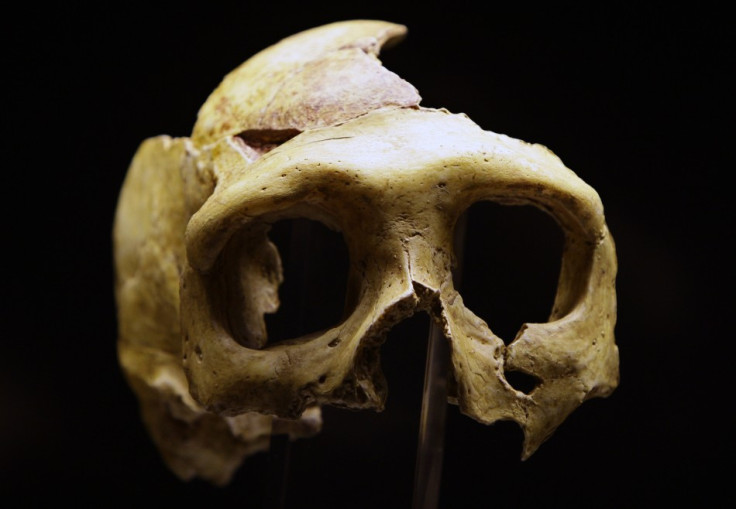Neanderthal Man Mystery: Larger Eyes but Poor Brain Development Led to Extinction
New research suggests the Neanderthal may have become extinct because of poorly developed cognitive functions.
A study of the skulls of the hominid species, published in the Proceedings of the Royal Society B Journal, states they had comparatively larger eyes than the Homo sapiens. This led to an assumption species evolution prioritised the development of better eyesight, to help see in the dark, over the ability to conduct social networking tasks and high-level processing.
Despite similar brain sizes, the Neanderthal was a larger animal than the Homo sapiens is and therefore required more brain power to maintain and control their physical frame than we do ours. Therefore, when one group of the Neanderthals migrated from Africa to Europe, the consequent evolution of eyesight at the expense of the frontal lobes, associated with higher-level thinking, may have contributed to the extinction of the faction that migrated.

"Since Neanderthals evolved at higher latitudes, more of the Neanderthal brain would have been dedicated to vision and body control, leaving less brain to deal with other functions like social networking," Eiluned Pearce of Oxford University told BBC News.
The inference Pearce, who compared 32 Homo sapiens skulls and 13 Neanderthal skulls, drew was that the latter species were unable, for example, to undertand the importance of warm clothing in cold temperatures. The actual difference is small - the eye sockets were, on average, only six millimetres longer for Neanderthals. However, the scientists claim this would have been enough to severely impair the development of cognitive brain skills.

"We infer that Neanderthals had a smaller cognitive part of the brain and this would have limited them, including their ability to form larger groups. If you live in a larger group, you need a larger brain in order to process all those extra relationships," Professor Chris Stringer, a part of the research team and an expert in human origins at the Natural History Museum, explained.
Neanderthal vs Homo sapiens
The study also explained the period of overlap between the two hominid species. And archaeological findings suggest the development of the two species, studied in parallel, reveals several points of innovation - like the ability to sew warm cloths - that may have been the result of differentiated brain development.
"Even if you had a small percent better ability to react quickly, to rely on your neighbours to help you survive and to pass on information - all these things together gave the edge to Homo sapiens over Neanderthals, and that may have made a difference to survival," Stringer explained.
© Copyright IBTimes 2025. All rights reserved.





















